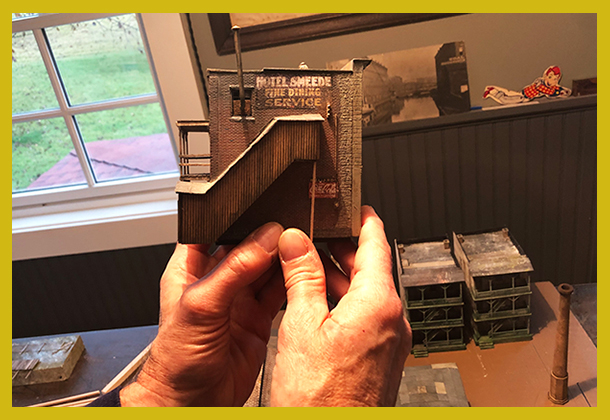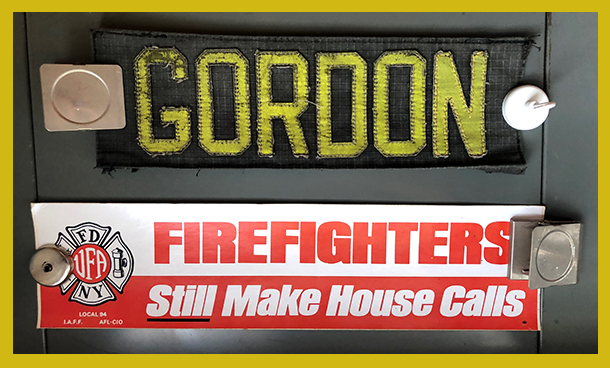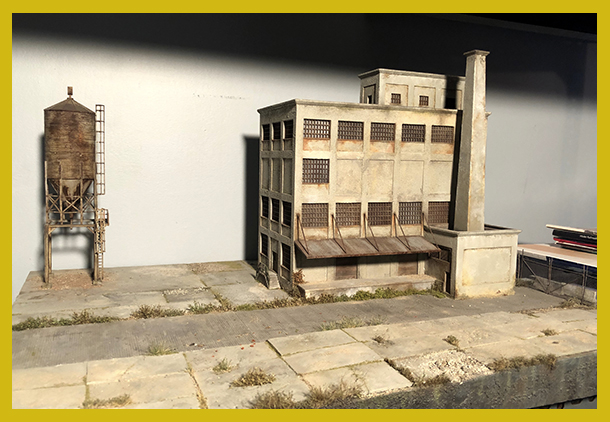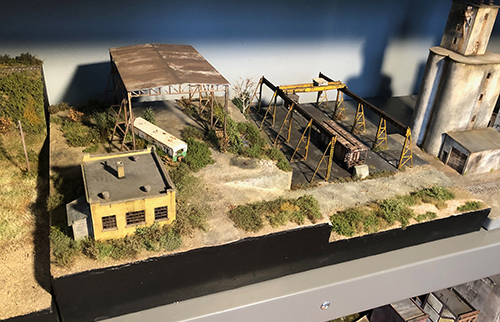
A FORMER NEW YORK CITY FIREFIGHTER RECREATES THE AMERICAN SCENE IN MINIATURE, ONE OLD, DECAYING BUILDING AT A TIME
by Edward M. Gómez
Dennis Gordon is deeply proud of his accomplishments as a firefighter in New York City; during the many decades in which he served as a first responder in one of the most vital — and toughest — jobs in the world, he saw it all — fear, panic, destruction, and unfathomable pain.
His experiences as a firefighter shaped him in many ways, of course, but even Gordon seems somewhat surprised that, now that he is retired from the Fire Department of the City of New York (FDNY), as his former employer is officially known, his thoughts and interests have led him in a very different direction. In recent years, Gordon has become an artist.
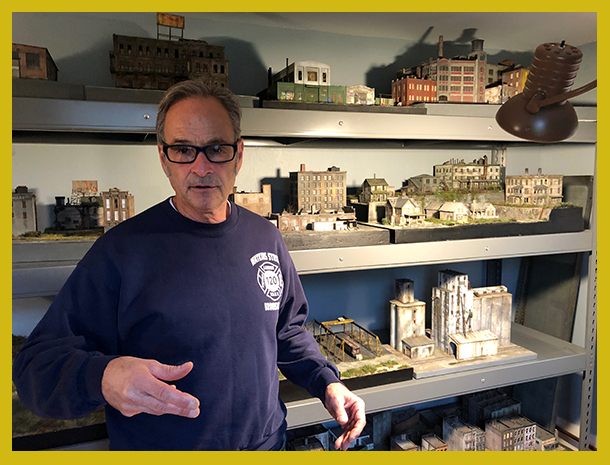
As a self-taught art-maker, his credo can be easily summed up like this: “Think small. Very small.”
That’s because Gordon has become a creator of meticulously crafted, miniature versions of the abandoned buildings he travels around the United States photographing and documenting, producing a fascinating, if somewhat haunting, record of deterioration and decay. Gordon’s collaborator in this ongoing photo-documentary project is Alex Woodhouse. DarkBuilding, the website on which they present their work, features photographs of such abandoned structures as factories, hospitals, hotels and motels, schools, breweries, and amusement parks.

On the website, Gordon notes, “I’ve been drawn to abandoned buildings all my life. When I became a New York City firefighter in 1978, entering and navigating vacant structures became both a full-time job and a passion. Around the same time, I moved to the Lower East Side of Manhattan, surrounded by blocks of vacant tenements. Despite the dangers, I spent much time exploring these urban ruins.”
He adds, “I fell in love with turn-of-the-century industries: mills, warehouses, foundries, loft buildings and factories. This also included former institutions such as asylums, prisons, schools, and hospitals. And also foreclosed homes.”
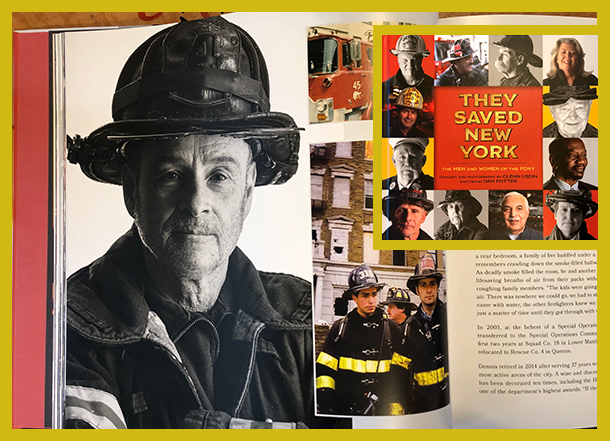
Gordon brings an enthusiastic observer’s eye for detail to his photography and to his crafting of the miniature renditions of the old buildings he chooses to recreate in his studio. brutjournal visited him there a few months ago; Gordon’s workspace is located in an old house he renovated and in which he lives in the mid-Hudson Valley region, just north of New York City.
There, his property spills over many verdant acres, providing a tranquil setting for a man who spent many years responding to panic-filled crises and for the production of his painstaking artworks, which demand plenty of time and deep concentration as they are being assembled.
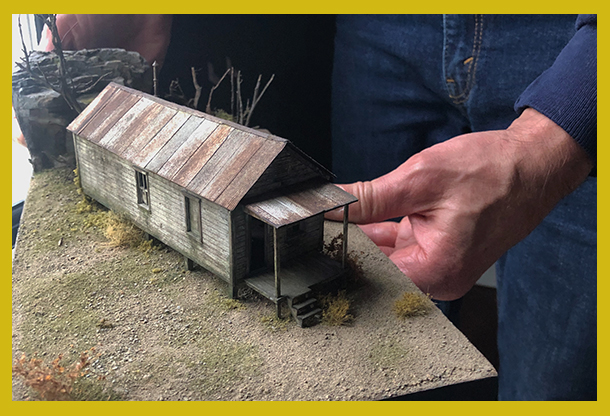
Gordon told brutjournal, “At first I looked at what I was doing as a hobby, but then some friends referred to my small-scale buildings as sculpture or art, and to me as an artist. I suppose I’m still getting used to being called — or calling myself — an artist but I do enjoy showing my work and, of course, it’s always very satisfying when people appreciate and like what I’m doing.”
Gordon showed us the range of tools and supplies he uses to create his tiny, precisely scaled-down buildings, including strips of wood and plastic; glues, paints, and chemicals that are employed to create various surface finishes; a generous supply of brushes; and an indispensable collection of fine-point razor cutters.
With these materials, Gordon can recreate the look and character of old, weathered brick or wood; aged, cracked concrete; and time-worn metal or industrial glass. To see one of his multi-building recreations of an old factory compound is to long to shrink down to the size of a bean and actually set foot in one of his deteriorating or dilapidated old structures.
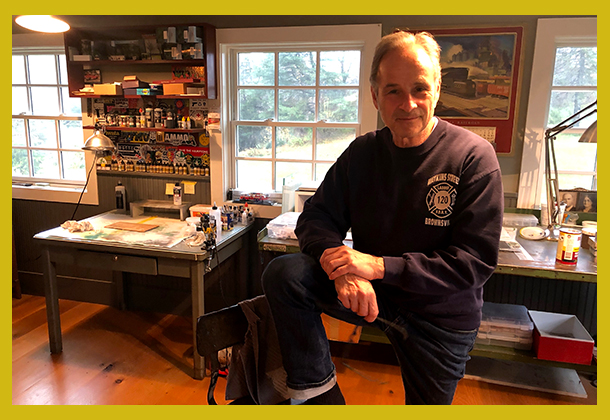
We’re hoping that Gordon may have an opportunity to exhibit a large selection of his abandoned-building miniatures before too long, for they’re sure to be as alluring to viewers as they are intriguing.
Thematically, they feel timely, too, for they reflect the character of a country that is in woeful decline in many notable ways — in its society, its politics and civic life, and, to be sure, in the strength and capacity of its once-formidable manufacturing base.
In this way, Gordon’s art offers both a nostalgic, admiring nod to and something of an unwitting requiem for the United States’ once-proud, industrial past.
[Scroll own to see more photos from the artist Dennis Gordon’s studio. To view more examples of his miniature-buildings sculptures, see his Instagram account: @dkbldg.]
